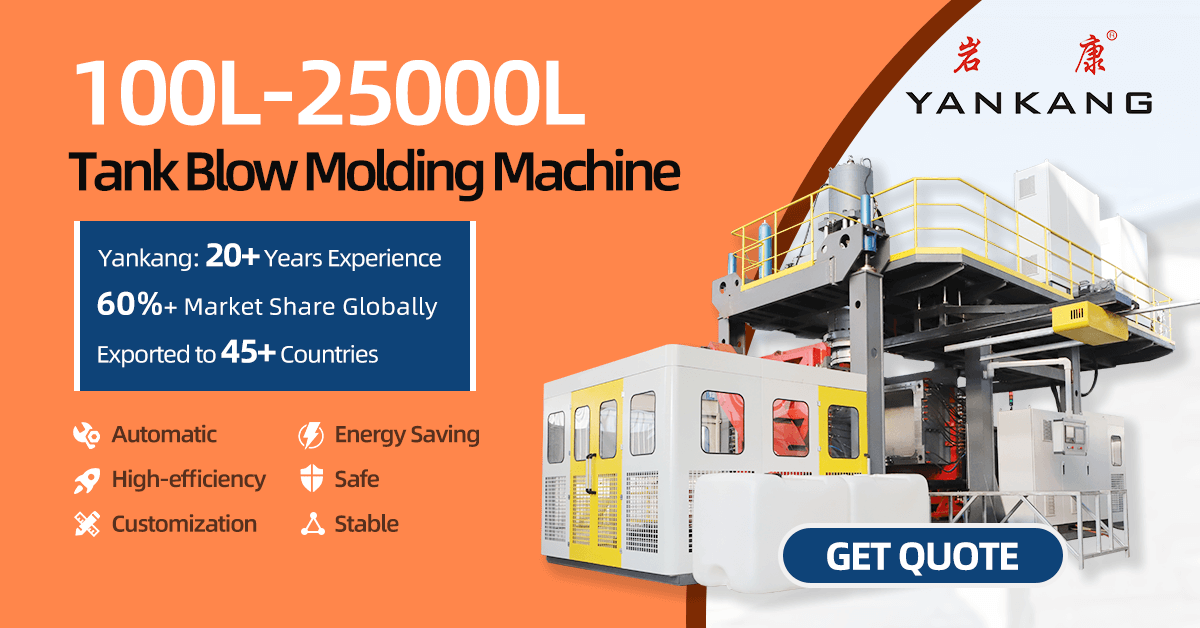Blow molding machine technology has revolutionized the manufacturing industry, enabling the efficient production of various hollow plastic products. Central to this process are blow molding machines, which have continually evolved to incorporate advanced technologies.
In this article, we will delve into the cutting-edge technologies used in blow molding machines, highlighting their benefits, applications, and impact on the industry.

1. Extrusion Systems:
Extrusion is a critical component of blow molding machines, and advancements in extrusion technology have significantly improved the production process. Some notable extrusion system technologies include:
a. Accumulator Heads:
Accumulator heads allow for the storage of a large volume of molten plastic, facilitating the production of complex shapes and larger containers with uniform wall thickness. This technology ensures efficient material distribution and enhances the design capabilities of blow-molded products.
b. Co-Extrusion:
Co-extrusion technology enables the simultaneous extrusion of multiple layers of different plastics, resulting in products with enhanced barrier properties, improved strength, and aesthetic appeal. This is particularly useful for applications such as packaging, where product integrity and shelf life are crucial.
2. Automation and Controls:
Advancements in automation and control systems have significantly improved the efficiency, accuracy, and ease of operation of blow molding machines. Key technologies in this domain include:
a. Programmable Logic Controllers (PLCs):
PLCs offer precise control over all machine functions, allowing for seamless integration of various parameters such as temperature, pressure, and speed. This enhances product consistency, reduces the risk of errors, and streamlines the production process.
b. Human-Machine Interface (HMI):
HMIs provide an intuitive user interface that enables operators to monitor and control machine operations effectively. Touchscreen displays, real-time data visualization, and remote monitoring capabilities empower operators to optimize machine performance and manage production parameters effortlessly.
3. Material and Mold Technologies:
Advancements in material and mold technologies have had a significant impact on blow molding machine capabilities:
a. Lightweighting:
With a growing emphasis on sustainability, blow molding technology has embraced light-weighting techniques. By optimizing design and material distribution, manufacturers can reduce the weight of blow-molded products while maintaining structural integrity. This minimizes material usage, lowers production costs, and contributes to eco-friendly practices.
b. Rapid Tooling and 3D Printing:
The advent of rapid tooling and 3D printing technologies has revolutionized the mold-making process. Prototyping and production molds can now be fabricated quickly and cost-effectively, allowing for faster turnaround times and increased design flexibility. This innovation has opened doors to customized, low-volume production runs.
4. Energy Efficiency:
The need for greener manufacturing processes has prompted the development of energy-efficient technologies in blow molding machines:
a. Electric Drives:
Traditional hydraulic drives are being replaced with energy-efficient electric drives, reducing energy consumption and operating costs. Electric drives offer higher precision control and decrease maintenance requirements, contributing to a cleaner and more sustainable production environment.
b. Energy Recovery Systems:
Energy recovery systems capture and reuse excess energy generated during the cooling and compressed air processes. By recycling this energy, blow molding machines can operate more efficiently, making them an environmentally-friendly choice for manufacturers.
Blow molding machine technology continues to advance, driven by the need for increased productivity, improved product quality, and environmental sustainability. The integration of advanced extrusion systems, automation and controls, material and mold technologies, and energy-efficient solutions has elevated the capabilities of blow molding machines.
Manufacturers can now achieve higher productivity levels, produce more intricate designs, and reduce their environmental footprint. As technology continues to progress, the future holds even more exciting possibilities for blow molding machine technology.
